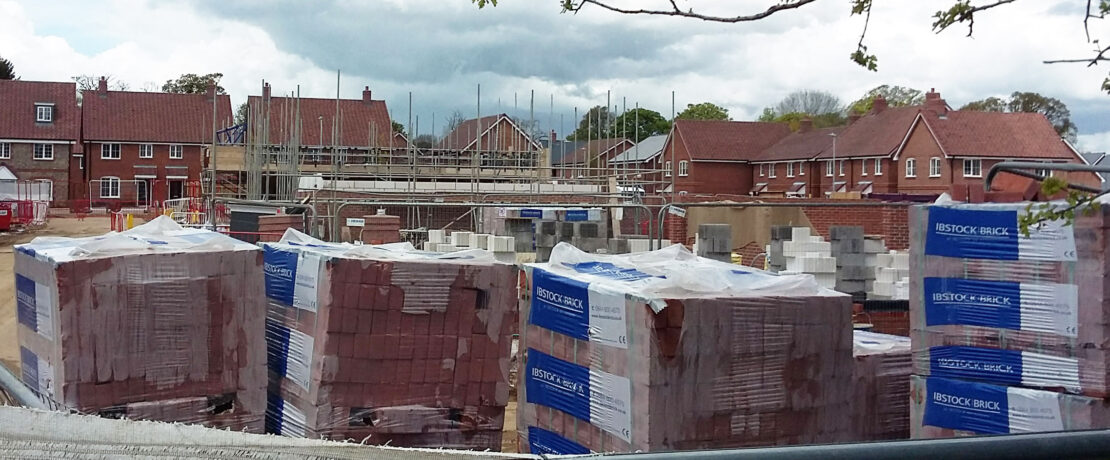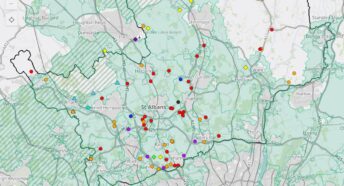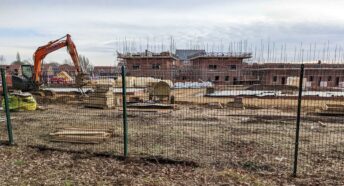New Housing Need algorithm – alarming implications for Hertfordshire
The Government is proposing a new, mandatory method of calculating housing need that would result in dramatically increased housing targets for local authorities across Hertfordshire, with consequent huge threat to the countryside.
The Government is consulting on its proposed reforms to the National Planning Policy Framework and other changes to the planning system. One of the major proposals is a new algorithm for calculating housing need.
A possible new algorithm is significant because the way that housing need is calculated can produce enormous variation in results, and this has huge implications for the countryside. Here we take a closer look at the numbers.
What is the new algorithm?
The proposed algorithm is based on the current number of existing dwellings (known as housing stock). The algorithm increases the existing stock by 0.8% per year, across all local authority areas. This increase is then further multiplied by an affordability factor based on median house prices in a particular area versus median earnings for that area. Where house prices are high, this multiplier is large. This is applied to the 0.8% increase in housing stock to arrive at the Government’s definition of “housing need”.
In CPRE Hertfordshire’s view, this blanket approach to determine housing need bears no relationship to actual housing need in any particular area. It’s simply an across-the-board arithmetical increase in housing stock, with even more housing layered on top which the Government believes will result in lower, more affordable house prices.
How many more houses would be built in Hertfordshire?
Shown below are the housing need figures produced by the current standard method and the proposed new standard method, together with the number and percentage change for each district and for Hertfordshire as a whole. (All data rounded to nearest whole number.)
Under the proposed new standard method, eight out of Hertfordshire’s ten local planning authorities would see significantly higher housing need figures, with St Albans District, Dacorum and Hertsmere Boroughs having the greatest increase.
Across all of Hertfordshire, the new algorithm would result in an increase in housing need of 1,499 dwellings per year, or 19% higher than under the old standard method. By comparison, across the whole of the London authority area, according to the new algorithm housing need would decrease by 18%.
| Local Authority | Annual Housing Need – current standard method | Annual Housing Need – proposed new standard method | Annual Increase / Decrease | Percentage Change |
| Broxbourne | 634 | 735 | + 100 | + 16% |
| Dacorum | 1016 | 1313 | + 297 | + 29% |
| East Herts | 1041 | 1173 | + 132 | + 13% |
| Hertsmere | 731 | 959 | + 228 | + 31% |
| North Herts | 910 | 992 | + 82 | + 9% |
| St Albans | 885 | 1544 | + 660 | + 75% |
| Stevenage | 470 | 498 | + 28 | + 6% |
| Three Rivers | 640 | 739 | + 99 | + 15% |
| Watford | 850 | 800 | – 50 | – 6% |
| Welwyn Hatfield | 910 | 834 | – 77 | – 8% |
| Hertfordshire | 8087 | 9586 | + 1499 | + 19% |
Data source: UK Government, Outcome of the proposed revised method
The proposed new housing need algorithm produces one set of alarming figures. Even more alarming is the Government’s data showing how many more housing completions would be needed every year, as compared to how many dwellings have actually been delivered on average over the past three years.
The table below shows that every district throughout Hertfordshire would have to increase their annual completions by a double- or triple-digit percentage.
| Local Authority | Annual Housing Need – proposed new standard method | Average annual net additions (2020/21 – 2022/23) | Number additional completions needed each year | Percentage additional completions needed each year |
| Broxbourne | 735 | 333 | + 401 | + 120% |
| Dacorum | 1313 | 674 | + 639 | + 95% |
| East Herts | 1173 | 852 | + 321 | + 38% |
| Hertsmere | 959 | 277 | + 682 | + 246% |
| North Herts | 992 | 467 | + 525 | + 112% |
| St Albans | 1544 | 411 | + 1133 | + 276% |
| Stevenage | 498 | 120 | + 378 | + 316% |
| Three Rivers | 739 | 150 | + 589 | + 393% |
| Watford | 800 | 670 | + 130 | + 19% |
| Welwyn Hatfield | 834 | 341 | + 492 | + 144% |
| Hertfordshire | 9586 | 4295 | + 5291 | + 123% |
Data source: UK Government, Outcome of the proposed revised method
But would these figures actually translate into more houses being built?
Local authorities grant permission for planning applications, but they are not able to control the rate of housing completions – developers do. And there are many reasons why houses are not completed, including systemic factors such as skills and materials shortages in the construction industry.
There’s also the issue of developers banking land and “managing” the pace of the housing completions that they do build, in order to maintain higher levels of profit. Barratt Developments plc, one of the UK’s largest housebuilders, reported in its trading update for the year ended 30 June 2024 and published on 10 July, that their “lower order book and more muted demand” resulted in a 28.5% decline in home completions in the first half and an 8.7% decline in the second half of the year.
We do not believe that the figures shown in the tables above represent realistically achievable levels of housing completions in Hertfordshire.
And even if they are completed, will building more houses result in more affordable houses?
The Economist recently analysed this question (see 10 August 2024 edition, “Would building 1.5m homes bring down British house prices?”) and concluded that the answer is “Not by much.” Their analysis found that house prices are most heavily affected by changes in interest rates, i.e. mortgage affordability. They cite a Bank of England study that found about half of the 170% rise in real house prices between 1985 and 2018 can be explained by falling interest rates, and the rest by rising incomes. So while housing supply, i.e. building more dwellings is not irrelevant, it is not a strong driver of house prices.
We believe other factors also mitigate against house prices becoming more affordable. On the supply-side of the equation, the number of second homes and/or holiday lets, and the number of empty homes, will tend to reduce supply and increase prices. On the demand-side of the equation, at times of geopolitical or economic upheaval elsewhere in the world there will tend to be increased demand from investor-buyers (i.e. people who buy a UK dwelling as an investment or ‘safety net’, not necessarily to live in) and thus an increase in prices.
The Government’s proposed planning changes would require developers to deliver a greater proportion of “affordable” homes, as a percentage of the total dwellings on each development site. But “affordable” is defined as 80% of the market rate, which we know from our own research is simply not affordable to those earning median wages in Hertfordshire. And besides, the Government’s proposals would retain the viability loophole, allowing developers to reduce the proportion of affordable homes they actually deliver versus the proportion specified at time of planning consent.
For all of the above reasons, we believe the Government’s approach will not result in more affordable houses.
Our conclusion?
In summary, we are deeply concerned by the Government’s proposed new standard method algorithm for calculating housing need. It is a blanket approach that will result in huge increases in so-called “need” without taking into account actual need in any particular area. It rests on what we believe is the mistaken belief that simply requiring local authorities to set higher housing targets will actually result in more houses being built by developers, and that this will drive house prices down.
We believe it is far likelier that developers will see the proposed changes as a green light to proceed with big new speculative development proposals for lots of market-based or “executive” homes on prime agricultural i.e. greenfield land. And there will then be a tsunami of development across the countryside.
Read more about the Government’s various proposed changes to the planning system in our Briefing Note published on 7 August 2024.
CPRE Hertfordshire continues to do everything we can to protect and promote the Hertfordshire countryside, for everyone, for today and for the future. We will shortly be submitting a robust response to the currently-pending Government consultation. And we will continue fighting alongside local Hertfordshire campaign and community groups to save the countryside from inappropriate development.
Please join us
If you are share our concern for the Hertfordshire countryside and want to see it protected for future generations to value and enjoy, please join us and become a CPRE member. We rely on membership subscriptions and donations to fund all of our work, and it’s quick and easy to join online.








